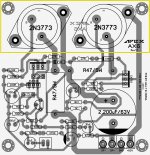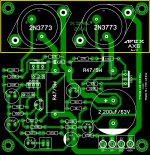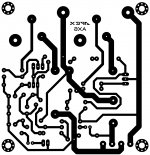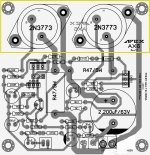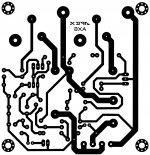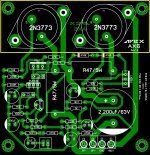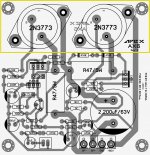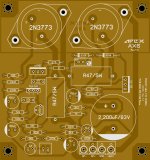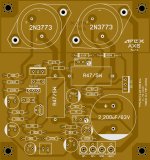with the output dc blocking caps, i can not see how this amp can blow up speakers...the split rail amps has more potential to damage speakers when the output trannies fail as shorts...
blocking caps can fail as short, but it's rare and upper transistor must short at same time.
i have never encountered burned out woofers using this type amp, that is why i am very fond of this amp topology....😀
I've used it with single supply. C3 ist the output series cap.The 4QD-TEC amp has a split power supply and no speaker series cap...
Some people ask for pcb without PSU, and someone want to put caps 25mm diametar.
Here they are with 25mm dia caps.
Regards,
Attachments
Here they are with 25mm dia caps.
Regards,
1N4148 must be in thermal connection with heatsink, replace position 27R and one 1N4148 diode.
Regards
Attachments
Last edited:
About the 4QD-TEC
Most of these old speaker capacitor amps like the AX6 generate an internal middle voltage between the plus supply and ground, which can cause assymmetry in the output waveform if that voltage is not really the middle. The speaker typically goes between the middle, DC blocked by the series speaker cap, and the ground. The 4QD may be different, but I really don't understand that point. It does have a middle voltage forced by the power transformer to be the middle, since it has a split supply.
I read the text again on the 4QD-, I'll concede C3 is the speaker capacitor. What is not obvious is where the speaker return current goes? Pin 5, 6, 7, 1, 2?I've used it with single supply. C3 is the output series cap.
Most of these old speaker capacitor amps like the AX6 generate an internal middle voltage between the plus supply and ground, which can cause assymmetry in the output waveform if that voltage is not really the middle. The speaker typically goes between the middle, DC blocked by the series speaker cap, and the ground. The 4QD may be different, but I really don't understand that point. It does have a middle voltage forced by the power transformer to be the middle, since it has a split supply.
About the 4QD-TEC
I read the text again on the 4QD-, I'll concede C3 is the speaker capacitor. What is not obvious is where the speaker return current goes? Pin 5, 6, 7, 1, 2?
Most of these old speaker capacitor amps like the AX6 generate an internal middle voltage between the plus supply and ground, which can cause asymmetry in the output waveform if that voltage is not really the middle. The speaker typically goes between the middle, DC blocked by the series speaker cap, and the ground. The 4QD may be different, but I really don't understand that point. It does have a middle voltage forced by the power transformer to be the middle, since it has a split supply.
assumetry is a given with this amp, as long as you keep the output cap to at least half of your rail, you can maximize output voltage...
in order to do that, i would replace the 220k resistor on the uppermost left hand side to a 470kohm trimpot set to half that value,
this is in order to compensate for transistor to transistor variations,,
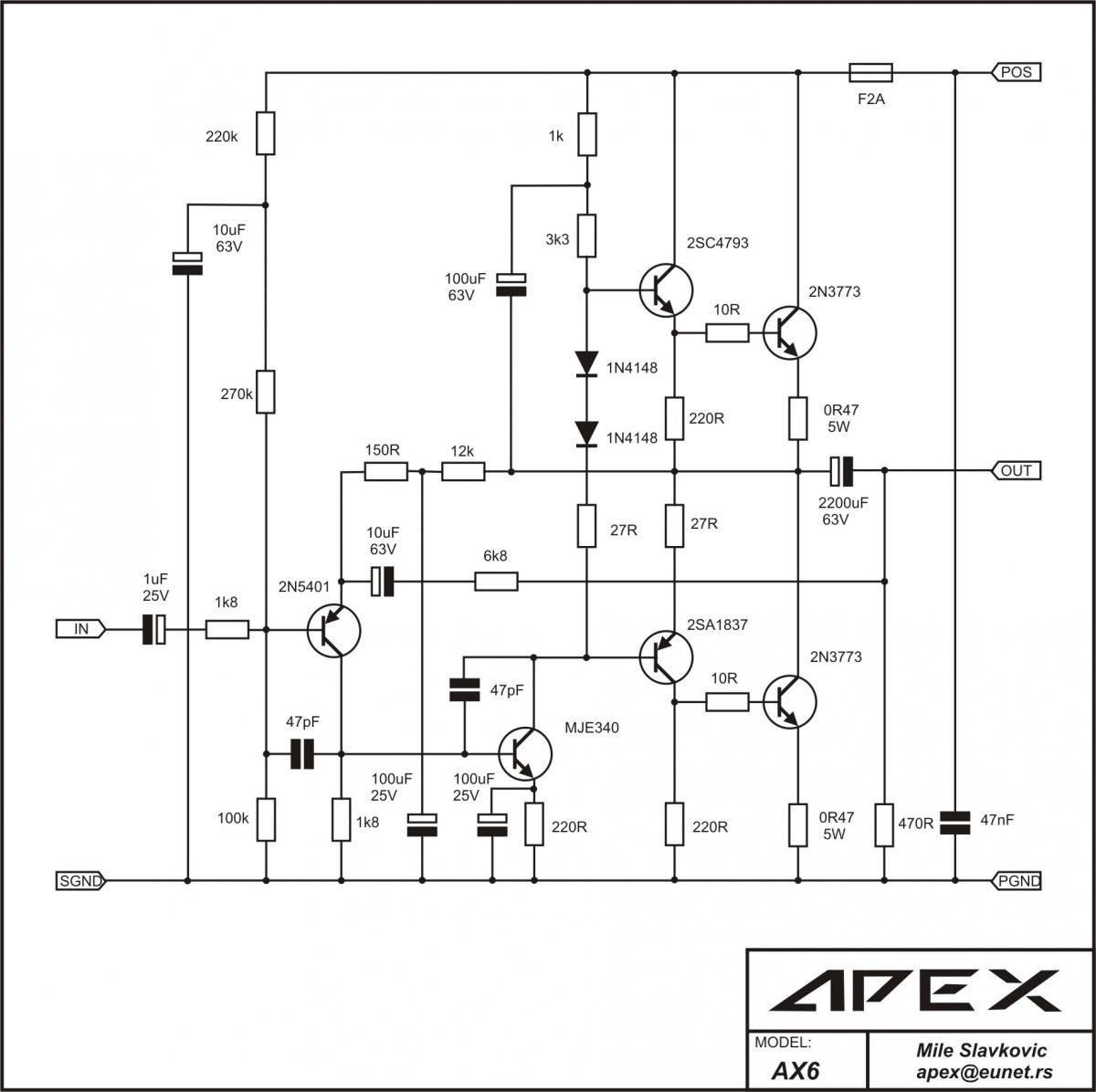
1N4148 must be in thermal connection with heatsink, replace position 27R and one 1N4148 diode.
Regards
i would replace the 27 ohm with a 50 ohm trimpot so i can adjust bias, the 1n4148 can still be mounted in contact with the heatsink as shown.
1N4148 must be in thermal connection with heatsink, replace position 27R and one 1N4148 diode.
Regards
Ok, Here they are....
Attachments
i would replace the 27 ohm with a 50 ohm trimpot so i can adjust bias, the 1n4148 can still be mounted in contact with the heatsink as shown.
You can use trimpots and replace with resistors after adjust.
You can use trimpots and replace with resistors after adjust.
i want to be able to choose my bias current so the trimpot....😀
and the 500k trimpot to set the hotside of the output cap to half the psu rails...
The RCA factory has been demolished and turned into a shopping mall. Unless your "2n3055 RCA" transistors were removed by you from old power supplies or something, and considering where you live, I would suspect your transistors are counterfeit.hi Mr.Mile,if using Tr 2N3055 RCA for replace 2N3773 can me using 45Vac with 5 Ampere supply?
People that have suspect supply sources determine the suitability of power transistors for the application by doing a Vceo test on every one. Since your "45 vac" works out to 67 V peak, make up a test jig to short b to e, put a multimeter milliamps scale from a 70 VDC power supply to collector, ground on emitter, and see how much leakage current you get. Even the 200 ma result from the ST datasheet (purchaser of the RCA logo) is too much leakage to use at this elevated voltage.
We can buy 2n3773 from On semi here, via farnell.com or mouser.com. These have a much more suitable leakage current at 70 v, and a safe operating area spec of 1.5 a @ 100 V, which make a very useful transistor for 70 V supply amps.
Quite nice??? its claiming "here the 2nd harmonic is under -120dB (0.0001%)". Thats 10x less distortion than the Hypex Ncore @2W ....himmm...
Reading through the evolution of the design, he clearly knows what he's doing. I've built the amp, using an 80V supply, and have used it to drive my QUAD ESL-63s, with excellent results.
I think the test results sent in by Peter Schroder are closer to what i would expect. Anyhow this is Apexaudio's thread 🙂.
I have old stock 200pcs and picture like this
This is RCA, you can use 2N3055 with +60V maximum, I suggest 35V AC.
@wiljj78, can you make a version of boards based on my comments on post #48 and #49? thanks...
Which one you preferred?
Attachments
- Home
- Amplifiers
- Solid State
- Retro Amp 50W Single Supply
